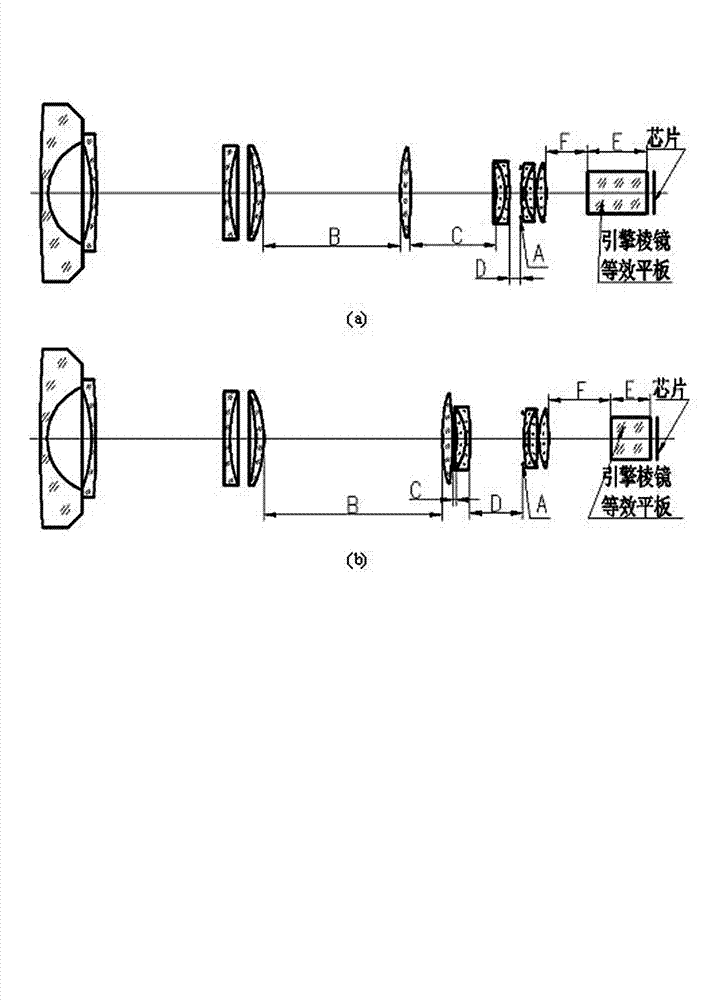Zoom projection fish-eye lens generally used for digital projector
A technology of projector and fish projection, applied in the field of zoom projection fisheye lens, can solve the problems of unable to reduce production cost, complicated structure, and affecting the development of spherical screen projection technology, etc.
- Summary
- Abstract
- Description
- Claims
- Application Information
AI Technical Summary
Problems solved by technology
Method used
Image
Examples
Embodiment Construction
[0028] The present invention will be further described below in conjunction with drawings and embodiments. It is only used to explain the present invention and its beneficial effects, and is not used to limit the protection scope of the present invention.
[0029] In the embodiment of the present invention, a general-purpose zoom fisheye lens is designed for mainstream engineering digital projectors currently on the market. times; the full field of view angle is 160°; the image height range of the half field of view is YH=4.8~6.48 mm, which is suitable for the use of digital projectors with 1LCD, 3LCD, and 1DMD technology types, and the chip size range under the full field of view is 0.63~ 0.95 inches, satisfying the aspect ratio of the chip including 4:3 and 16:9; the inverse telephoto ratio of the lens - the ratio of the optical back focus L' to the focal length fn is 6.44~8.54; the relative aperture D' / fn is 1 / 2.0, where D' is the diameter of the entrance pupil. The focal...
PUM
 Login to View More
Login to View More Abstract
Description
Claims
Application Information
 Login to View More
Login to View More - R&D
- Intellectual Property
- Life Sciences
- Materials
- Tech Scout
- Unparalleled Data Quality
- Higher Quality Content
- 60% Fewer Hallucinations
Browse by: Latest US Patents, China's latest patents, Technical Efficacy Thesaurus, Application Domain, Technology Topic, Popular Technical Reports.
© 2025 PatSnap. All rights reserved.Legal|Privacy policy|Modern Slavery Act Transparency Statement|Sitemap|About US| Contact US: help@patsnap.com



